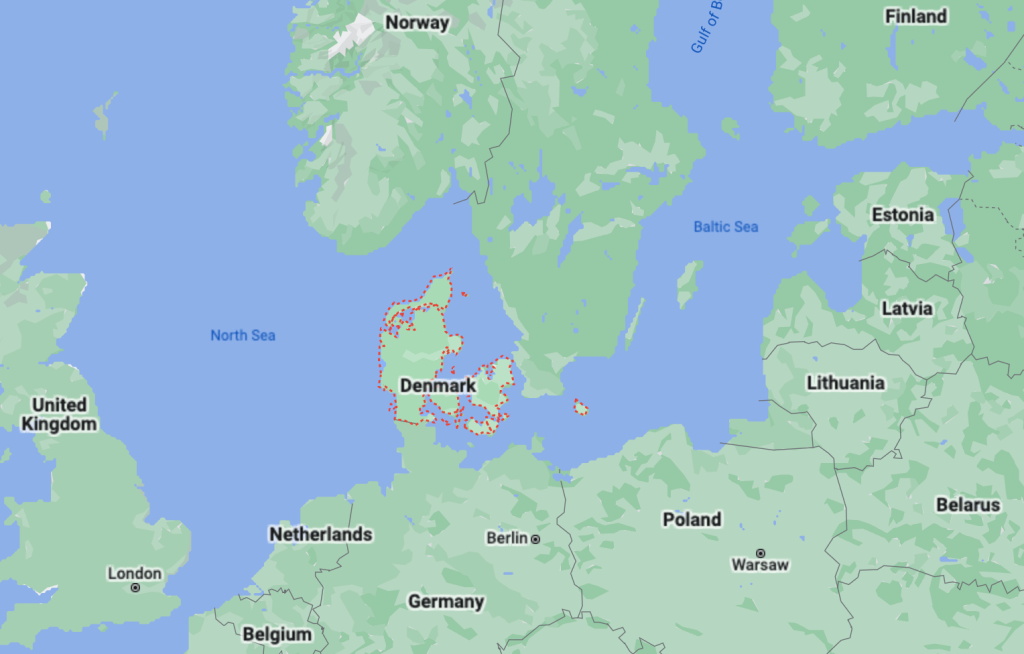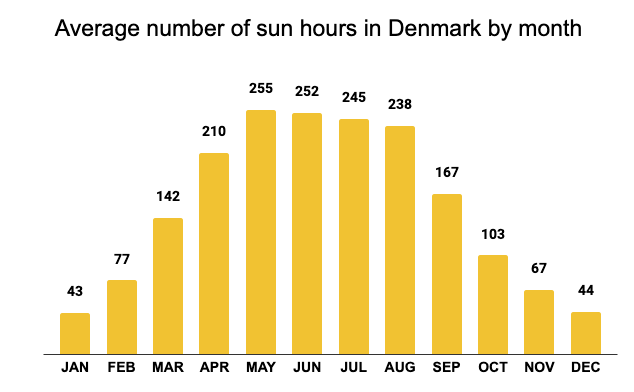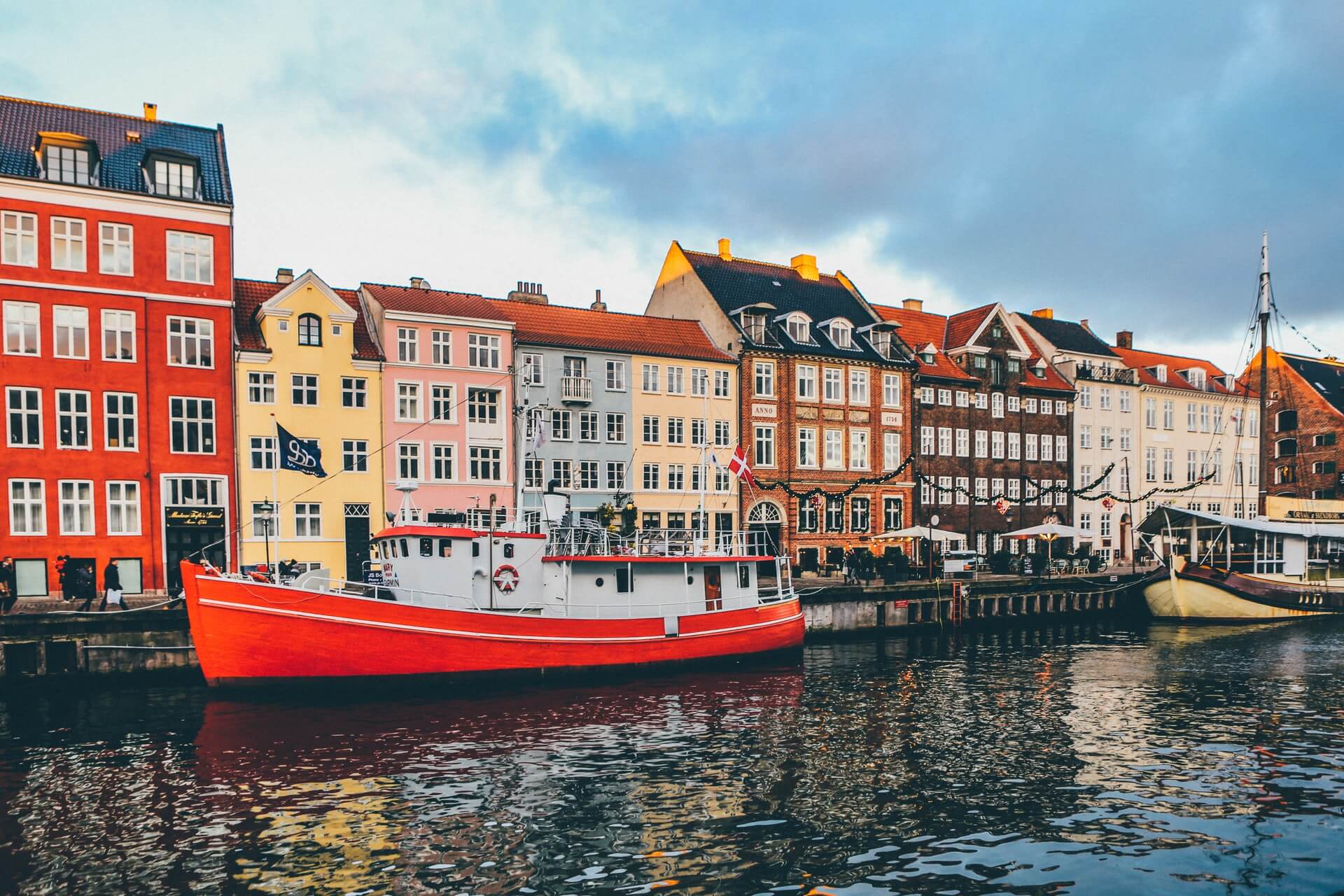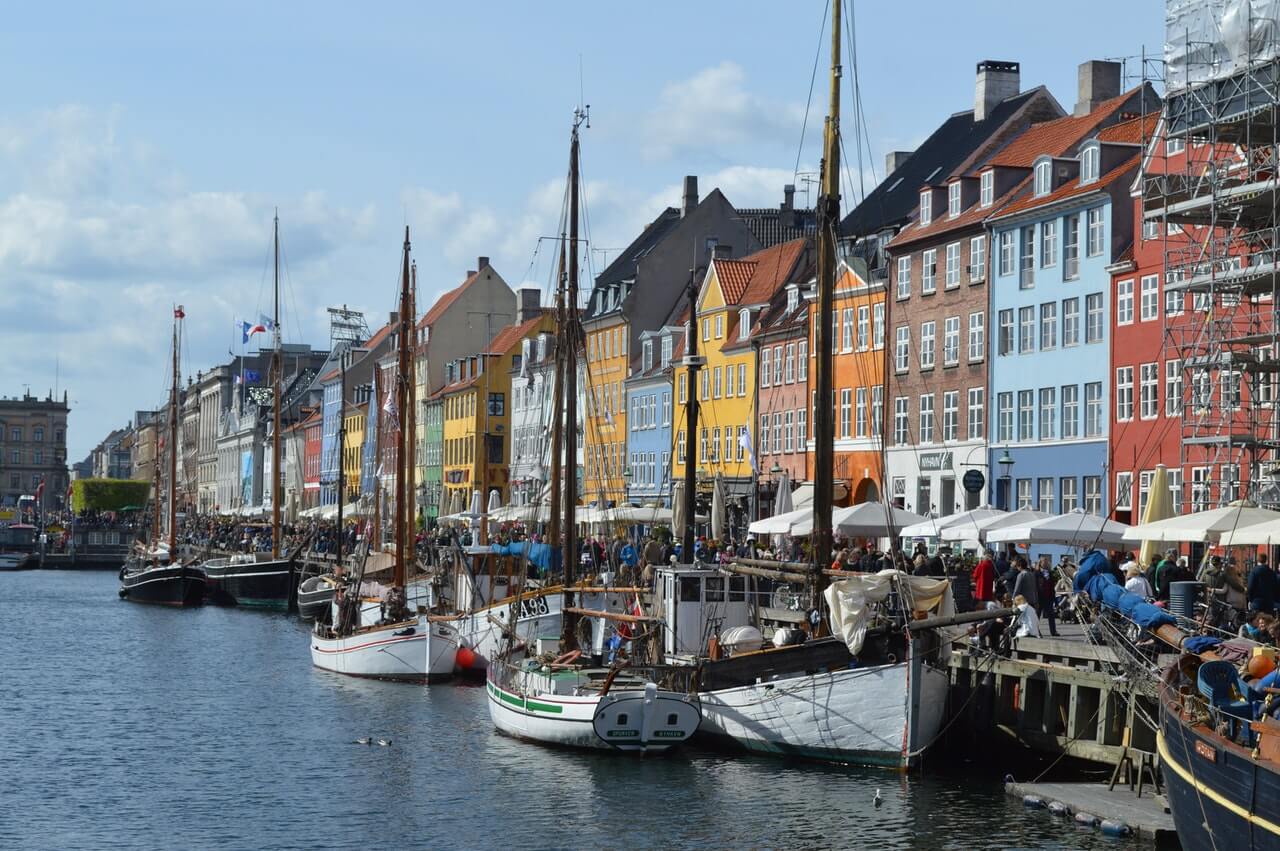Are you wondering when is the best time to visit Denmark?
In general, the best time to visit Denmark is from May to September. These months offer warm, pleasant weather and a wide range of activities and attractions to enjoy.
Whether you want to explore Denmark’s beautiful beaches and islands, visit its museums and cultural attractions, or simply relax in the sunshine, there is something for everyone in Denmark during these months.
In the following sections, we will delve into more detail about the best time to go to Denmark and provide some helpful tips to make the most of your trip.
About Denmark
Denmark is a country located in Northern Europe. It’s bordered by Germany to the south, Sweden to the east, and Norway to the north. It’s also located south of the Baltic Sea and north of the North Sea.

The population of Denmark is around 5.8 million people and the capital city is Copenhagen.
The landscape of Denmark is relatively flat, with a mix of rolling hills, agricultural land, and forests. The country is known for its long coastline, with over 7,000 islands.
In Denmark, you will be amazed by its beautiful beaches, charming fishing villages, and historic castles and mansions.
FURTHER READING
What is the best time of year to visit Denmark?
For the optimal experience, the best time of year to visit Denmark is during the warmer months from May to September.
During this period, the days are longer, and the sun sets later, providing ample daylight for sightseeing and exploring the country’s many attractions. The weather is mild and ideal for outdoor activities such as cycling, hiking, and picnicking in the countryside.
July and August are the peak tourist season, and the weather is at its warmest. This is the perfect time to attend one of Denmark’s many festivals and events, such as the Aarhus Festival, the Roskilde Festival, and the Copenhagen Jazz Festival.
Climate in Denmark
Denmark has a Temperate Climate, with cool summers and mild winters.
Average temperature
In Denmark, the spring months (March-May) bring mild temperatures, with average highs ranging from 9-19°C (48-66°F) and average lows ranging from 1-9°C (34-48°F).
During the summer (June-August), Denmark experiences warm weather, with average highs ranging from 20-24°C (68-75°F) and lows averaging around 12-14°C (54-57°F).
In the autumn months (September-November), temperatures start to cool down, with average highs ranging from 10-19°C (50-66°F) and average lows ranging from 4-11°C (39-34°F).
In the winter (December-February), Denmark is generally cold, with average highs ranging from 5-7°C (41-45°F) and average lows ranging from -1-1°C (30-48°F).

Number of monthly rainy days
In Denmark, the average number of rainy days per month ranges from 7 to 13 across the year.
The autumn and winter months of November and December tend to be the rainiest, with an average of 12-13 rainy days per month.
The driest are February and March with an average of 7-8 rainy days per month.

Number of monthly sun hours
Denmark experiences relatively long hours of sunlight during the late spring and summer months, with the days being very long and the sun setting late. The sunniest months in Denmark are May, June, July, and August with 255, 252, 245, and 238 sun hours respectively.
In the winter months, the days are much shorter, with the sun setting early in the afternoon. The darkest months in Denmark are November, December, and January, with 67, 44, and 43 sun hours respectively.

Seasons in Denmark
Denmark has four distinct seasons: spring, summer, autumn, and winter.
Spring (March to May)

Spring in Denmark lasts from March to May and is characterized by mild temperatures and increasing hours of sunlight. The days get longer and the weather becomes warmer as the season progresses.
In March, the maximum temperature is around 9°C (47°F) and the minimum temperature is around 1°C (34°F). There are 142 hours of sun and 8 rainy days. The weather conditions are generally bad.
In April, the maximum temperature increases to 13°C (55°F), and the minimum temperature increases to 4°C (39°F). There are 210 hours of sun and 9 rainy days. The weather conditions are tolerable.
In May, the maximum temperature continues to increase, reaching 19°C (66°F), and the minimum temperature increases to 9°C (48°F). There are 255 hours of sun and 9 rainy days. The weather conditions are generally good.
| SPRING | MAR | APR | MAY |
|---|---|---|---|
| Max temperature | 9°C / 47°F | 13°C / 55°F | 19°C / 66°F |
| Min temperature | 1°C / 34°F | 4°C / 39°F | 9°C / 48°F |
| Monthly sun hours | 142 hours | 210 hours | 255 hours |
| Monthly rainy days | 8 days | 9 days | 9 days |
| Weather conditions | Bad | Tolerable | Good |
Summer (June to August)

Summer in Denmark lasts from June to August and is the warmest season of the year. The days are long, with the sun setting late in the evening.
In June, the maximum temperature is around 20°C (68°F) and the minimum temperature is around 12°C (54°F). There are 252 hours of sun and 9 rainy days. The weather conditions are generally great.
In July, the maximum temperature increases to 24°C (74°F), and the minimum temperature increases to 14°C (57°F). There are 245 hours of sun and 10 rainy days. The weather conditions are generally great.
In August, the maximum temperature decreases slightly to 23°C (74°F) and the minimum temperature remains at 13°C (56°F). There are 238 hours of sun and 10 rainy days. The weather conditions are generally great.
| SUMMER | JUN | JUL | AUG |
|---|---|---|---|
| Max temperature | 20°C / 68°F | 24°C / 74°F | 23°C / 74°F |
| Min temperature | 12°C / 54°F | 14°C / 57°F | 13°C / 56°F |
| Monthly sun hours | 252 hours | 245 hours | 238 hours |
| Monthly rainy days | 9 days | 10 days | 10 days |
| Weather conditions | Great | Great | Great |
Autumn (September to November)

Autumn in Denmark lasts from September to November and is characterized by cooler temperatures and shorter days. The leaves on the trees start to change color, creating a beautiful autumnal landscape.
In September, the maximum temperature is around 19°C (66°F) and the minimum temperature is around 11°C (51°F). There are 167 hours of sun and 11 rainy days. The weather conditions are generally good.
In October, the maximum temperature decreases to 13°C (55°F), and the minimum temperature decreases to 7°C (45°F). There are 103 hours of sun and 11 rainy days. The weather conditions are tolerable.
In November, the maximum temperature decreases further to 10°C (50°F), and the minimum temperature decreases to 4°C (39°F). There are 67 hours of sun and 13 rainy days. The weather conditions are generally bad.
| AUTUMN | SEP | OCT | NOV |
|---|---|---|---|
| Max temperature | 19°C / 66°F | 13°C / 55°F | 10°C / 50°F |
| Min temperature | 11°C / 51°F | 7°C / 45°F | 4°C / 39°F |
| Monthly sun hours | 167 hours | 103 hours | 67 hours |
| Monthly rainy days | 11 days | 11 days | 13 days |
| Weather conditions | Good | Tolerable | Bad |
Winter (December to February)

Winter in Denmark lasts from December to February and is the coldest season of the year. The days are short, with the sun setting early in the afternoon. Snow is common in Denmark during the winter months, especially in the northern parts of the country.
In December, the maximum temperature is around 7°C (45°F) and the minimum temperature is around 1°C (34°F). There are 44 hours of sun and 12 rainy days. The weather conditions are generally bad.
In January, the maximum temperature is around 5°C (40°F) and the minimum temperature is around 0°C (31°F). There are 43 hours of sun and 11 rainy days. The weather conditions are generally bad.
In February, the maximum temperature is around 5°C (41°F) and the minimum temperature is around -1°C (31°F). There are 77 hours of sun and 7 rainy days. The weather conditions are generally bad.
| WINTER | DEC | JAN | FEB |
|---|---|---|---|
| Max temperature | 7°C / 45°F | 5°C / 40°F | 5°C / 41°F |
| Min temperature | 1°C / 34°F | 0°C / 31°F | -1°C / 31°F |
| Monthly sun hours | 44 hours | 43 hours | 77 hours |
| Monthly rainy days | 12 days | 11 days | 7 days |
| Weather conditions | Bad | Bad | Bad |
Best time to visit Denmark weather-wise
The best time to go to Denmark weather-wise is from May to September. This is when the weather conditions are warm and pleasant and you can enjoy long days.
June, July, and August are the ideal times to visit Denmark if you want to experience warm, sunny weather and long days. The country experiences its warmest temperatures and most sun hours during this time, making it a fantastic time for outdoor activities.
The shoulder months of May and September are good times to visit Denmark if you want milder temperatures and fewer tourist crowds.
Best time to visit Denmark for sightseeing

The best times to visit Denmark for sightseeing are in May and September.
During these months, the weather is mild and the crowds are minimal, making it a great time to explore Denmark’s cultural attractions, historical sites, and natural beauty.
If you visit Denmark during the summer months of June to August, you can expect warm, sunny weather and long days that are perfect for outdoor activities and sightseeing. These months are also the busiest and most popular for tourists, so be prepared for higher rates and more crowded sites.
Best time to visit Denmark for events and festivals
If you’re looking to immerse yourself in Denmark’s cultural events and festivals, the summer months of June, July, and August are the best time to visit.
During this time, you can experience several famous events and festivals such as:
Roskilde Festival (June-July) – This is one of the biggest and most popular music festivals in Europe, taking place in the city of Roskilde, located just outside of Copenhagen, in late June or early July. The festival features a wide range of music genres, from rock and pop to electronic and hip-hop, and attracts thousands of visitors from around the world.
Copenhagen Jazz Festival (July) – This festival is held every July and is one of the biggest jazz festivals in Europe. The festival features a wide range of jazz music and attracts jazz enthusiasts from around the world. There are many venues across the city and you can expect live performances from both local and international artists.
Aarhus Festival (July) – This is an annual cultural extravaganza held in July in the city of Aarhus, the second-largest city in Denmark. The jazz concert is one of the festival’s highlights, with over 300 jazz concerts taking place at 30 different venues throughout the city. The daytime jazz concerts at the festival are free, allowing anyone to attend and enjoy the musical performances.
See more guides about Denmark

